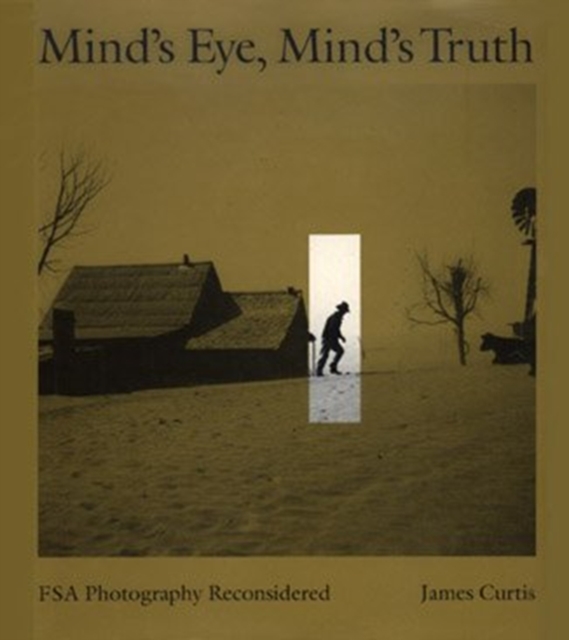
Mind's Eye, Mind's Truth : Fsa Photography Reconsidered Paperback / softback
by James Curtis
Part of the American Civilization series
Paperback / softback
- Information
Description
In May 1936, Farm Security Administration photographer Arthur Rothstein was sent to the Badlands of South Dakota to document the persistent drought that ravaged the Great Plains.
He came upon a sun-bleached steer's skull on a parched alkali flat and took several photographs of the scene.
Then he moved the skull a few feet to achieve more dramatic contrast and deeper shadow detail.
It was this photo that would rank among Rothstein's most famous images, but when the story of his artistic manipulation was discovered by the press, the resulting outrage and charges of fakery threatened to shut down the FSA's documentary project.
Rothstein spent the rest of his career explaining the skull photographs.
In "Mind's Eye, Mind's Truth", James Curtis challenges the pervasive belief that documentary photographs are realistic because they are not consciously arranged images.The 82 photographs considered in this book evidence the deliberate arrangement of elements and subjects that are the hallmarks of art and, as such, are forbidden to documentary photographers.
Curtis argues that this "manipulation" was not intended to deceive but to persuade. Roy Stryker, who headed the FSA documentary project, and his photographers wanted to enlist the sympathies of an urban, middle-class audience in the cause of reform and so they fashioned images that conformed to the values of their viewers.
Thus, the bitter realism portrayed in the FSA collection was "deliberate, calculated, and highly stylized." Curtis focuses his analysis on four well-known FSA staff photographers whose work gained widespread recognition and did much to influence America's vision of rural poverty.In considering revered and unknown photographs by Walker Evans, Dorothea Lange, Russell Tee, and Arthur Rothstein, as well as personal papers, memoirs, interviews, and the FSA file, Curtis reconstructs the methods the photographers used to create the images that defined the Depression in the public's imagination.
James Curtis is Professor of History and Director of the Winterthur Program in Early American Culture at the University of Delaware.
Information
-
Available to Order - This title is available to order, with delivery expected within 2 weeks
- Format:Paperback / softback
- Pages:160 pages, illustrations; portraits
- Publisher:Temple University Press,U.S.
- Publication Date:07/11/1991
- Category:
- ISBN:9780877228233
Information
-
Available to Order - This title is available to order, with delivery expected within 2 weeks
- Format:Paperback / softback
- Pages:160 pages, illustrations; portraits
- Publisher:Temple University Press,U.S.
- Publication Date:07/11/1991
- Category:
- ISBN:9780877228233



